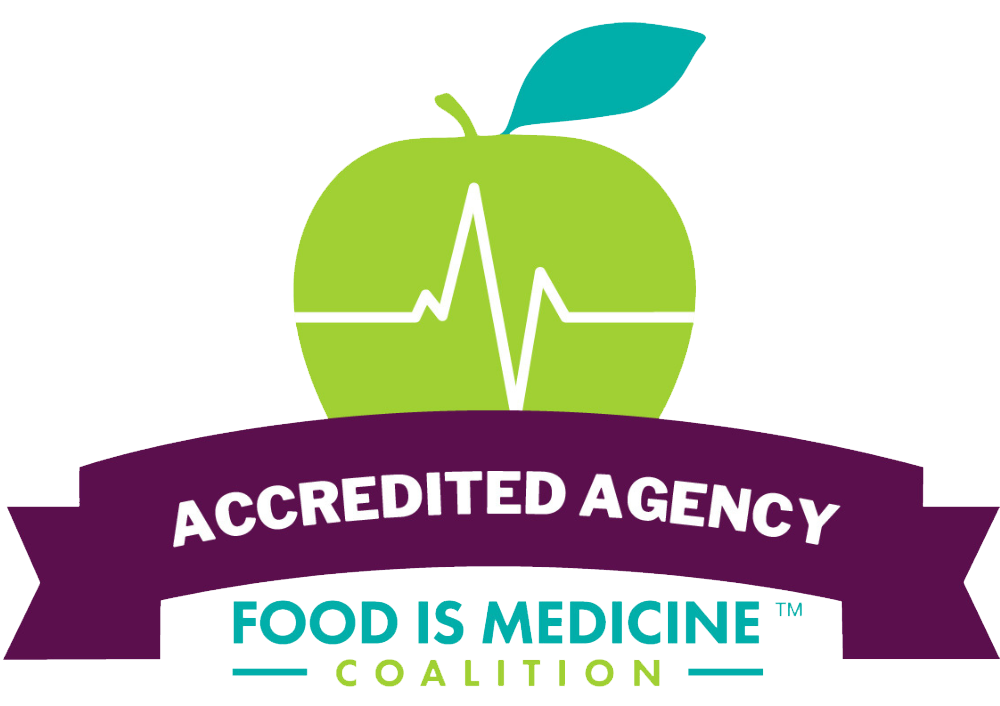By Lindsay Verraster, MPH, RDN, LDN
March is National Nutrition Month, and we’re taking a closer look at nutrition as it relates to aging. Every year through scientific research, we learn more about how our foods impact our health. Most of us strive to live long lives, right? But how often do we consider the quality of life during our later years? At Community Servings, we believe it’s never too early to invest in your and your family’s future with diet choices that support healthy aging.
For example, a diet rich in protein and calcium and a few daily servings of antioxidants can support optimal health as you head into older age. These nutrients factor into your overall strength and stability, as they are vital for bone density and muscle mass.
Punch Up Your Protein Intake
Recent research shows that daily protein requirements are likely to increase as we age. An excellent way to keep up is to incorporate a bit of lean or plant-based protein into each meal and at least one snack (except for anyone following a diet for chronic kidney disease). Doing this helps ensure that your body gets what it needs. Additionally, adequate protein intake may help prevent natural muscle loss when paired with strength training.
My favorite tips for getting more protein include incorporating low-fat Greek yogurt in savory, creamy sauces, cooking it into desserts like banana bread, and adding a dollop of yogurt to soups. Other options are mixing a teaspoon of chia or hemp seeds into salad dressing or overnight oats. You can also give salads an extra protein punch by adding cannellini beans or steamed edamame to greens. Pumpkin seeds are an excellent addition to hummus and bean dips. Finally, for protein-forward snacks with a bit of crunch, try dry-roasted chickpeas or edamame, or popcorn tossed with a bit of nutritional yeast instead of salt.
Consider Foods Rich in Calcium
When it comes to calcium, you can increase absorption by consuming calcium-rich foods throughout the day rather than in one sitting. Sources to consider are tofu, cow’s milk, yogurt, low-fat cheeses, and fortified plant-based milk and cheese (check the nutrition label), beans, legumes, and salmon. The next time they’re on your menu, try adding a little low-fat shredded cheese to black bean soup or enchiladas as a tasty, calcium-filled topping.
At Community Servings, one of our favorite ways to incorporate additional calcium into our clients’ diets is by blending tofu to make a base for a healthy dip for fresh veggies. Our clients love it!
Remember to include vitamin D-fortified foods and drinks in your diet, too, as our bones can use dietary calcium better when we have adequate vitamin D. Fortified cereals high in fiber and low in added sugar are another great source of Vitamin D.
Active compounds in foods, known as antioxidants, can help protect our bodies from inflammatory damage. While researchers are still studying their impact, many in the field believe antioxidant-rich foods may have protective effects on memory and cognition and play a role in reducing the risk of chronic diseases.
Creative Ways to Get Antioxidants
Fortunately, it’s easy to consume antioxidants and start reaping their benefits. Some of my favorite ways include adding flavorful herbs, spices, and vitamin-C-rich fruits to meals and drinks. For example, I recommend blending fresh parsley or cilantro leaves and extra spices into hummus or tofu dip. When working, try squeezing fresh citrus into your water or green tea to keep you hydrated in the office or at home. You’ll hydrate and boost your antioxidant intake simultaneously!
If flat water doesn’t do it for you, kick things up a notch by muddling mint leaves, berries, or pomegranate seeds into seltzer water. This concoction is also an excellent option for anyone looking to reduce alcohol consumption – a known carcinogen that increases cancer risk. Replacing one or two alcoholic drinks a week with non-alcoholic antioxidant-rich hydration can positively impact overall health and support healthier eating habits. My favorite additions to fizzy water include fresh basil, mint, lime, star anise, and orange peel. For anyone limiting their added sugars (we all should be) but craving a touch of sweetness, I suggest stirring in a pinch of stevia.
With a few changes to your daily diet, you can empower yourself to stay as strong as possible for as long as possible.


